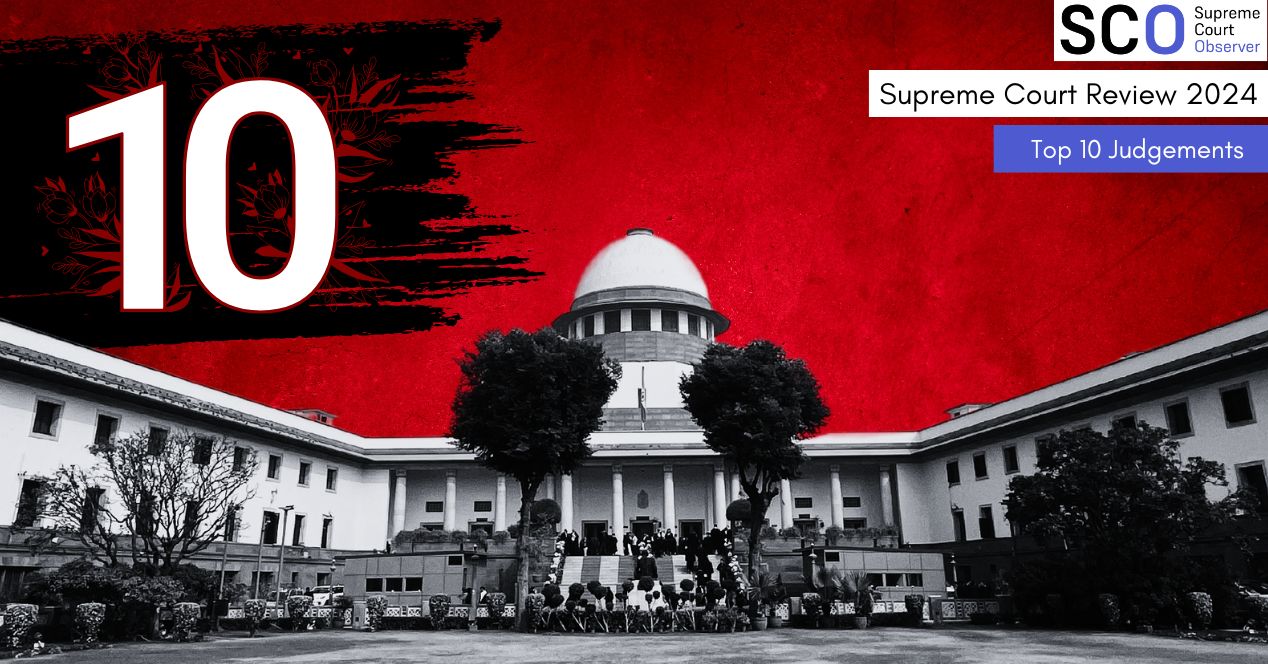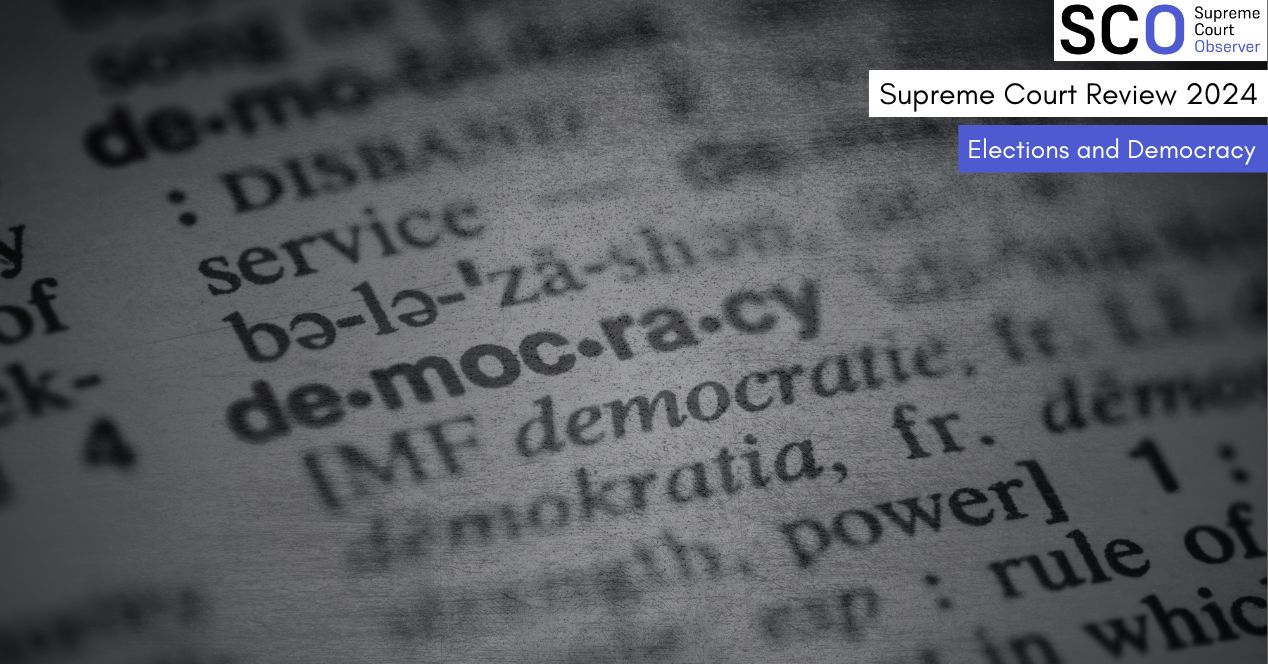Analysis
Supreme Court Review 2024: Upholding religious & cultural rights in a polarising environment
What does secularism mean in a land of a thousand faiths? This year's rulings on religion and culture attempt to frame an answer

In a nation as diverse as ours, the judiciary often finds itself at the crossroads of culture, religion and law. This year exemplified this dynamic, as the Supreme Court wrestled with cases that touched on minority rights and cultural preservation.
To some degree, matters that reach the Supreme Court can be reflective of broader societal trends. India’s secularism accommodates outward displays of religiosity and cultural assertion. Increasingly, however, such displays have been marked by a more menacing tinge. This year, on this front, the Supreme Court emerged as committed to constitutional morality in an environment marked by hot-headedness and polarisation.
In this article, we’ve largely restricted ourselves to cases where religious and cultural rights, as guaranteed in the Constitution, were directly at stake. Of course, there were several headline-grabbing cases, such as the Bilkis Bano convict remission matter, where the religious identity of the parties was the undercurrent in the dispute. Even there, the Court did well to uphold the rights of individuals from minority communities, though in cases like, say, the bulldozer demolitions matter, it was at pains to not look at the issue through a religious lens.
Justice beyond the veil
On 13 October 2022, a two-judge bench had delivered a split verdict in the high-profile Karnataka hijab case. The judges requested the Chief Justice to refer the matter to a larger bench, but there has been no sign of that happening. Meanwhile, in August 2024, a bench of Justices Sanjiv Khanna and Sanjay Kumar stayed a circular issued by Mumbai’s NG Acharya and DK Marathe College banning hijabs, caps and badges on campus.
While ordering the stay, the judges remarked that if the intention was to curb religious expressions on campus, then symbols like ‘tilak’ or ‘bindi’ had to be banned too. Even as the bench acknowledged that face-covering veils such as ‘niqabs’ could hinder classroom interaction, they stayed the parts of the circular banning headgear, reasoning that educational institutions cannot violate students’ freedom to choose their attire.
Minority report
A key theme in several court decisions concerned the question of “minority.” In January, a bench of Justices Hima Kohli and Ahsanuddin Amanullah banned the mention of caste or religious identities in case filings. The bench held that such references serve no purpose in legal proceedings and must be omitted from memos of parties across all courts.
That same month, a Division Bench pressed states to respond to a petition seeking information about state-wise grants of minority status. Despite multiple reminders by the top court in 2023, certain state governments had failed to submit their responses. As the year ends, this case stands pending before the Court.
This year, the Court closed the loop on a long-pending Constitution Bench case concerning the minority status of educational institutions. On 8 November, in a 4:3 verdict, the Court overruled its own decision in S. Azeez Basha v Union of India (1967), which had denied minority status to Aligarh Muslim University (AMU) on the ground that it had been established by the imperial government under the AMU Act in 1920.
The bench in the present case looked into the antecedents of the institution, which included the vision of its founder Sir Syed Ahmad Khan and the way it began life as the Muhammedan Anglo Oriental College, which sought to advance the educational and material interests of the Muslim community. Notably, for the first time in 75 years, the Court laid down indicators to determine the minority status of a religious or linguistic educational institution. A smaller bench is now expected to apply these indicators to determine the status of AMU.
The majority opinion, authored by former CJI D.Y. Chandrachud, highlighted that the “minority character” of the institution “is not a rigid concept” and statutory incorporation does not dilute an institution’s foundational character. Additionally, institutions established by religious or linguistic minorities need not be solely for their students or for only teaching their religion or language.
Justice Chandrachud’s opinion also stated that “the Indian secularism model allows state involvement in religious activities without compromising their character.” The judgement reiterated that Articles 29 and 30, though often perceived as privileges, are “special rights” ensuring “the protection of the cultural fabric of religious and linguistic minorities.”
In his dissent, Justice Surya Kant held that the minority status of a university hinges on its “legislative intent”. If it promotes broader education “without any barrier to children belonging to other religions”, its protection under Article 30 becomes “highly debatable”.
Citizenship and its discontents in Assam
On 17 October, the Court upheld Section 6A of the Citizenship Act, 1955, which implements the Assam Accord of 1985. The provision, aimed to address the influx of refugees following the 1971 Bangladesh Liberation War, sought to balance national and regional interests. There are two prongs to Section 6A:
- Those who entered Assam before 1 January 1966 are considered citizens
- Those who entered after 1 January 1966 but before 25 March 1971 and have been detected as foreigners can be considered citizens but will not have voting rights for 10 years from the date of detection
The effect of this provision was that anyone who entered Assam from Bangladesh on or after 25 March 1971 was an illegal immigrant. One of the grounds on which groups claiming to represent native Assamese had challenged Section 6A was that the influx of immigrants had changed the demographics of the state and violated the cultural rights of the Assamese. The Court clarified that Section 6A did not threaten Assam’s distinct identity, and the real issue was the provision’s non-implementation, not its constitutionality.
For many Assamese, the fear is of a deeper existential threat: the erosion of their linguistic, cultural and ethnic identity. The controversy over Section 6A highlights the deep-seated anxieties of indigenous communities over demographic and cultural shifts. It reflects a broader tension within India’s pluralistic democracy: how to balance the rights of displaced populations with the cultural identities of host communities.
A lesson in positive secularism
On 5 November, the Court upheld the constitutional validity of the Uttar Pradesh Board of Madarsa Education Act, 2004, overturning an Allahabad High Court ruling that struck down the Act in March.
Madarsas, blending religious and secular education, are integral to India’s cultural education. In Uttar Pradesh alone, over 1.2 million students attend 13,000 madrasas. The idea of “positive secularism” took centrestage in this judgement. The Court noted that the State must take “active steps to treat minority institutions on par with secular institutions while allowing them to retain their minority character.” In the Court’s framing, “positive secularism” allows the State “to treat some persons differently to treat all persons equally.”
Distinguishing between “religious instruction” and “religious education”, the Court asserted, on the day it reserved judgement, that secularism in India means “to live and let live” and “equal treatment of all religions”. Citing S R Bommai v Union of India (1994) former Chief Justice Chandrachud commented that “religious instructions are never an anathema in our country…It’s essentially a religious country.”
When counsel representing the National Commission for Protection of Child Rights argued that madarsas should not be viewed as substitutes for mainstream education, former CJI Chandrachud retorted, “Have you issued instructions against sending children to monasteries? Why is your focus only on madrasas?” He further observed that the answer to ghettoisation “lies in allowing people to come to the mainstream… Otherwise, what we essentially would be doing is to keep them in silos.”
How did the word ‘secular’ enter the Preamble?
A few weeks later, the word ‘secular’ was in the eye of a minor storm. The Court heard petitions filed by former MP-turned-Bharatiya Janata Party member Dr. Subramaniam Swamy and others, which challenged the insertion of words ‘socialist’ and ‘secular’ in the Preamble via the 42nd Amendment.
The petitioners argued that the amendment should be struck down, “due to its enactment during the Emergency”.
The Bench ruled that there was no “legitimate cause” or “justification” for challenging this amendment after nearly 44 years, “making the prayers particularly questionable”. The judgement highlighted how over time, India has developed its own interpretation of secularism “wherein the State neither supports any religion nor penalises the profession and practice of any faith.”
A broad view of cultural rights
A case about the habitat of the critically endangered Great Indian Bustard might be an unlikely one for the Court to expound on cultural rights. But, in March 2024, the Court recognised a fundamental right to be free from the adverse effects of climate change. It was in acknowledgement of the government’s position that it was installing solar transmission lines in Bustard habitat in furtherance of its sustainable development agenda.
Here’s where the Court undertook a broad reading of the cultural rights guaranteed by the Constitution. Chief Justice Chandrachud highlighted how forest dwellers, tribals and indigenous communities are at a high risk of “losing not only their homes but also their culture” because of climate change, which is “inextricably intertwined with the places they live in and the resources of that place.” He noted that the “relationship that indigenous communities have with nature may be tied to their culture or religion.”
India is also home to thousands of community-protected small forest patches known as ‘Sacred groves’, revered for their cultural and spiritual significance to local communities. On 18 December, a three-judge bench of the Supreme Court ordered the Rajasthan Forest Department to map and identify the state’s sacred groves, also called the Orans, while the Union was tasked with creating a national policy for the preservation of the sacred groves.
God and the gavel
As the year drew to a close, the Places of Worship Act, 1991, was back in the spotlight amid a spate of petitions in district courts demanding surveys of Muslim religious sites to determine if they were built over Hindu temples. The legislation, which provides for the maintenance of the character of a place of worship as it existed on 15 August 1947, was a topic of discussion because of the UP police’s killing of at least five Muslim men in Sambhal. The men were protesting a Court-ordered survey in the town’s Shahi Jama Masjid. On 11 December, a bench led by Chief Justice Khanna imposed a stay on all pending and new suits concerning the Places of Worship Act until it decided on the legislation’s constitutionality.
On 16 December, a bench of the Supreme Court deliberated whether chanting “Jai Shri Ram” inside a mosque can be considered a crime. The Court was hearing the Karnataka government’s appeal against a High Court ruling quashing the FIR against two men who allegedly trespassed into the Badriya Juma Masjid, shouted the slogan and fled. The High Court has ruled that such chants in a mosque do not outrage religious sentiments. During the hearing, the bench posed pointed questions to the petitioner, Haydhar Ali, seeking clarity on how a religious phrase or name constituted an offence. When the bench sought clarity on the identification of individuals who entered the mosque, Ali deferred, stating that this information rested with the state police. The matter is scheduled to be heard by the top court next in January 2025.
Correction: An earlier version mentioned that the stay in the hijab case would be in force until 18 November 2024. In fact, the order of the Court imposed no timeline on the stay, and only noted that it would be open for respondents to apply for vacation. The error is regretted.




